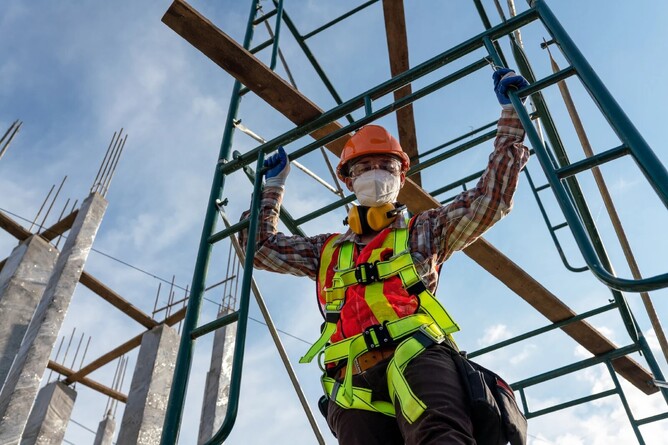When it comes to starting a construction project, scaffold hire is an expected necessity. Scaffolding Petone ensures that you can complete work of all kinds at height, without worrying about your employees’ safety and that of the building itself. But, what happens when the weather is not as favourable?
Construction doesn’t just pause when rain starts to fall, although this increases the health and safety risk. If you must work on scaffolding in the rain, here’s what you should know about staying safe, avoiding risks and adhering to best practices.
Staying Safe
Before starting any construction project that requires an expert scaffolding system, you should be implementing the following measures to stay safe. These measures remain the same, whether the weather is dry or wet and unfavourable.
Always inspect your scaffolding
Wear non-slip footwear
Utilise guardrails to avoid falls
Install proper lighting to increase visibility
Regularly maintain scaffolding components
Avoiding Risks
There are obvious and unexpected risks when scaffolding in the rain. For example, you might be prepared for working on slippery surfaces on your scaffolding platforms and access points, but less certain about the material instability that follows heavy rainfall – if your scaffold is made of wood, it deteriorates under prolonged rain, and thus becomes weaker and more unstable. This is why we advocate for more reliable metal scaffolding systems.
Other risks include:
Greater potential for electrical hazards
Poor visibility at height, making it difficult to work safely
Best Practices
As with all construction trades, there are best practices to adhere to when working at height. We recommend carrying out the following to make sure that you get the most out of your professional scaffolding system:
1. Keep your training and awareness up-to-date
Comprehensive training and awareness is the backbone of any successful construction project. Your employees should know how to work safely in bad weather – especially if your area is prone to prolonged and heavy rainfall. Proper procedure for navigating wet scaffolding must be enforced at all times.
2. Pay more attention to your workers’ PPE in the rain
If working at height in poor weather conditions, your workers should be fully equipped with PPE. It’s important to pay extra attention here, as sometimes PPE is eschewed for being uncomfortable or cumbersome. Are workers wearing hard hats, non-slip footwear, a waterproof jacket and full-body harness? This equipment is necessary to minimise and avoid slips, trips and falls.
3. Stop work when necessary
When scaffold boards are too slippery, we first recommend turning them downside to maximise their grip. But, if the rain continues and both sides of the scaffold board become slippery, it’s important to stop work entirely. Whilst this might curb your profit and displease your customers, remaining safe is the priority! All you have to do is wait for one of the sides to dry out properly before continuing your project.
Not all scaffolding in New Zealand is created equal. At King Kong Scaffold, we know how to construct secure, durable scaffolds based on a Ringlock scaffolding system for improved safety and flexibility. Our scaffolding has a higher loading capacity than many other systems, and can handle a range of different weather conditions. Contact us for more information about our scaffold hire, today.



